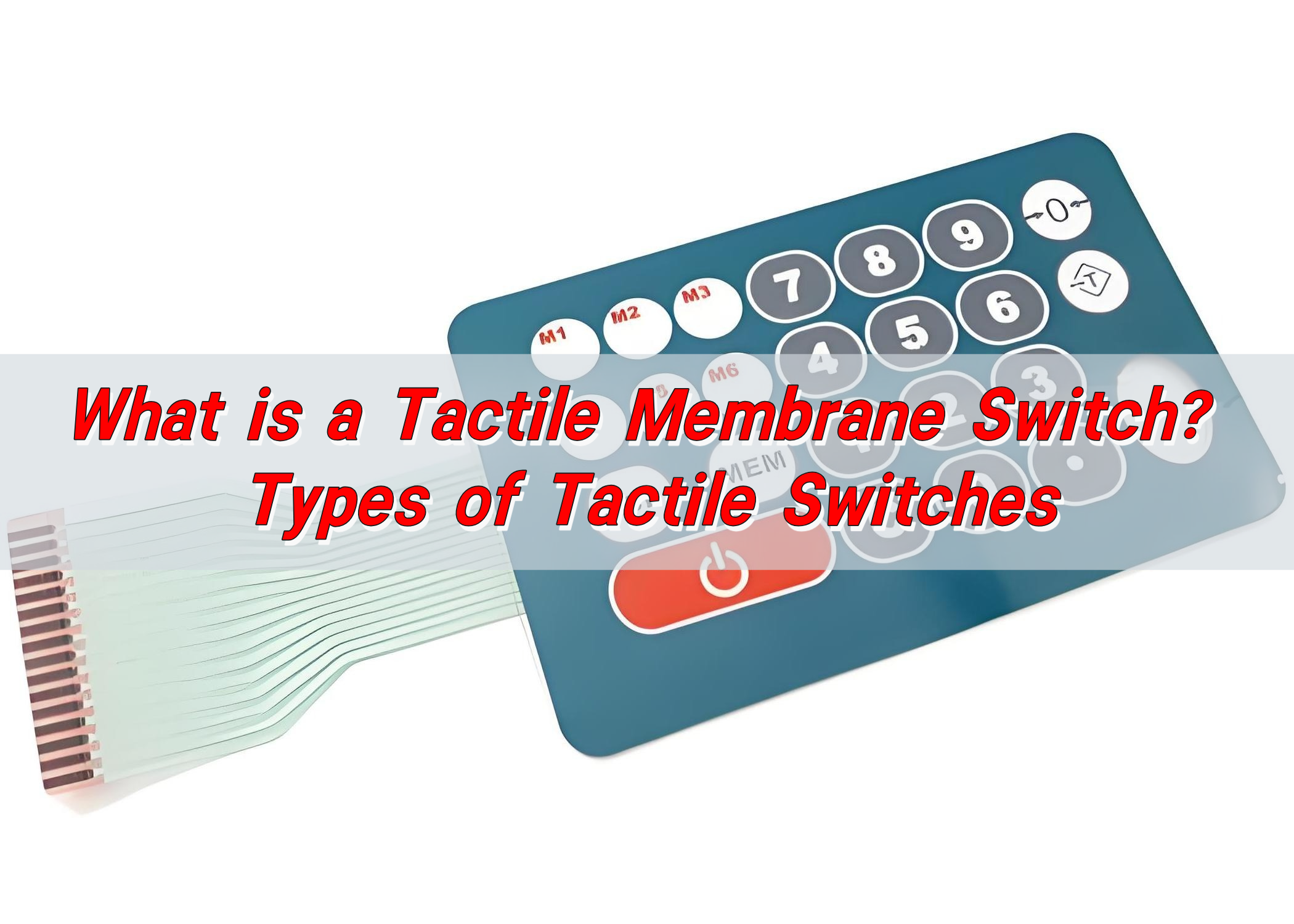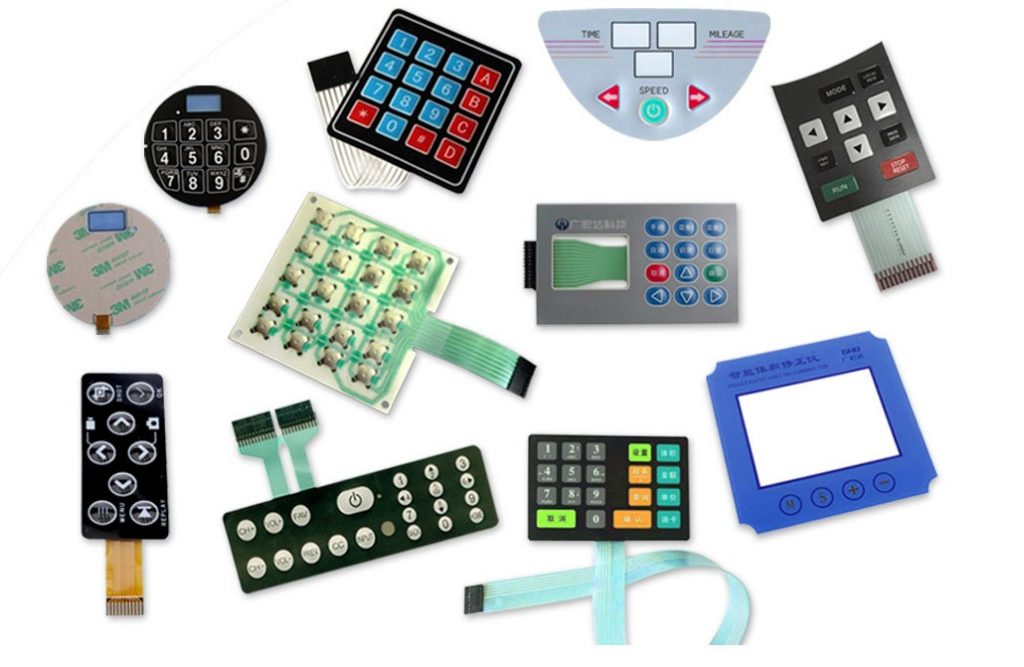All About Membrane layer Switch Over: A Comprehensive Overview for Beginners
Membrane buttons are necessary parts in contemporary electronic devices, offering an one-of-a-kind user interface for individual interaction - membrane switch. Their split building and construction, including overlays and conductive traces, supplies capability and toughness. Unlike typical mechanical buttons, membrane layer buttons provide a streamlined style and adjustable options. Comprehending their vital features and advantages can transform product layout. The ins and outs of their application and layout considerations call for further exploration.
What Is a Membrane Change?
A membrane button is a sort of electric switch that includes a flexible membrane layer layered over a printed circuit board. This design permits a smooth and small interface, usually used in various electronic tools. Membrane layer switches are generally discovered in consumer appliances, clinical equipment, and industrial equipment because of their longevity and resistance to ecological factors.The building and construction normally consists of several layers, such as graphic overlays and sticky backing, which supply tactile comments and shield the circuitry underneath. The operation of a membrane layer button is started when pressure is related to the surface, finishing an electric circuit.These switches are valued for their flexibility, allowing custom-made layouts and published graphics that provide to specific customer interfaces. Their inconspicuous nature lowers room needs, making them perfect for applications where typical buttons may not fit. On the whole, membrane layer switches offer a aesthetic and functional solution for modern-day digital devices.
Key Components of Membrane Changes
Membrane switches consist of numerous key elements that add to their capability and efficiency. The top layer, called the overlay, supplies the interface and is commonly printed with graphics or signs. Under the overlay exists a spacer layer, which separates the conductive elements and avoids unintended activation. The following important part is the graphic layer, which enhances aesthetic appeals and guarantees the resilience of the design.Conductive traces, typically made from products like silver or carbon, are published on the circuit layer. When stress is related to the overlay, these traces come into get in touch with, completing the circuit. In addition, a backing layer offers architectural support and can be made from materials such as polyester or polycarbonate. With each other, these parts create a reputable, easy to use interface suitable for different applications, from household devices to commercial equipment. Recognizing these elements is essential for any individual thinking about membrane layer switch innovation.
How Membrane Layer Changes Work
Comprehending exactly how membrane layer changes feature is crucial for appreciating their prevalent usage in numerous gadgets. A membrane layer switch operates via a collection of layers, including a visuals overlay, spacer, and a circuit layer. When stress is used to the overlay, it compresses the spacer layer, enabling the circuit layer to make contact and complete an electric circuit. This activity sends out a signal to the tool, triggering a feedback, such as switching on a light or triggering a function.Membrane switches over can be developed with different features, consisting of tactile responses, backlighting, and customized graphics, enhancing individual communication. Their building and construction allows for a closed design, securing the internal elements from dirt, moisture, and contaminants. This resilience makes them appropriate for varied applications, from customer electronic devices to commercial devices. On the whole, the simplicity and efficiency of membrane layer switches add to their appeal in contemporary technology.
Advantages of Membrane Layer Switches Over Mechanical Buttons
While mechanical switches have actually long been a staple in many tools, membrane switches offer distinctive benefits that make them increasingly appealing. One significant advantage is their slim profile, permitting even more compact layouts and higher adaptability in product development. Additionally, membrane switches function a consistent surface, which enhances aesthetic charm and streamlines cleaning, making them suitable for settings where health is critical.Another advantage is their resistance to dirt and wetness. Unlike mechanical buttons, which can be jeopardized by environmental elements, membrane layer buttons supply a sealed interface that shields versus impurities - membrane switch. Furthermore, membrane switches normally have a longer lifespan as a result of less moving components, causing enhanced toughness and reliability.Cost-effectiveness is likewise a significant advantage, as membrane buttons can be produced in bulk with reduced production expenses. These elements integrate to place membrane layer buttons as a practical alternative to standard mechanical alternatives in different applications
Common Applications of Membrane Switches Over
Membrane switches are commonly used in different markets, specifically in consumer electronics and commercial control board. In customer gadgets, they offer a sleek, straightforward user interface, while in commercial settings, they enhance durability and performance. Understanding these applications highlights the convenience and practicality of membrane layer buttons in modern technology.
Consumer Electronic Devices Instruments
As consumer electronics remain to progress, membrane layer buttons have actually become a popular option for a selection of devices due to their adaptability and smooth design. These buttons are commonly found in smart devices, tablets, and remotes, where space is restricted and aesthetic appeals issue. Their reduced profile and customizable designs allow makers to create user-friendly interfaces that enhance the overall individual experience. In addition, membrane switches are usually utilized in home appliances such as microwaves and coffee makers, offering user-friendly control options while withstanding wetness and dust. The toughness and integrity of membrane switches over make them suitable for daily consumer items, ensuring long life and regular performance. On the whole, their combination in consumer electronics shows a mix of performance and modern-day layout.
Industrial Control Panels
The applications of membrane layer changes extend beyond consumer electronic devices, finding considerable usage in commercial control board. These switches are favored for their longevity and resistance to extreme atmospheres, making them excellent for making and process control setups. They give a dependable interface for operators to regulate machinery, display procedures, and adjust settings. Membrane layer switches can be customized to suit certain operational demands, integrating features like backlighting and responsive feedback, boosting customer experience. Their inconspicuous design enables integration right into different tools, while their capability to stand up to spills, dust, and extreme temperatures assurances longevity. Overall, membrane switches add to secure and reliable operation in commercial applications, showing their flexibility and effectiveness in requiring atmospheres.
Considerations for Designing Membrane Layer Changes
When designing membrane layer buttons, selecting the appropriate materials is important to guarantee longevity and performance. In addition, recognizing layer setup strategies can significantly influence the button's performance and individual experience. These factors to consider play an essential duty in producing effective and trustworthy membrane layer switch styles.
Product Selection Value
Product selection plays a crucial role in the style and capability of membrane switches. The picked products directly impact the switch's durability, responsive response, and total visual. Trick factors to consider go now consist of the substratum, which have to give architectural honesty while permitting flexibility, and the visuals overlay, which needs to be immune to use and ecological elements. Conductive products should guarantee trustworthy electric efficiency, while adhesives need to provide strong bonding without jeopardizing the switch's operation. Additionally, company website compatibility with making procedures and end-user atmospheres is crucial; materials need to endure varying temperatures, humidity levels, and chemical exposure. Eventually, ideal product selection not just boosts the membrane switch's efficiency but additionally adds to its longevity and user contentment, making it an essential element of the layout procedure.

Layer Configuration Techniques

Often Asked Inquiries
How Long Do Membrane Changes Typically Last?
Membrane switches typically have a life-span of 1 to 5 million cycles, relying on use and ecological conditions. Elements such as style high quality and operating regularity substantially affect their resilience and general efficiency durability.

Can Membrane Layer Switches Be Personalized for Certain Layouts?
Membrane layer buttons can indeed be customized to accommodate particular styles, permitting varied shapes, colors, and performances. This adaptability makes it possible for suppliers to customize these buttons to fulfill one-of-a-kind visual and functional requirements effectively.
What Materials Are Used in Membrane Layer Switch Over Building And Construction?
Membrane buttons are usually constructed utilizing materials such as polyester, polycarbonate, and glue layers. These materials supply resistance, flexibility, and durability to environmental aspects, making sure the buttons operate efficiently in numerous applications and conditions.
Are Membrane Switches Water-proof or Immune to Dampness?
Membrane switches can be created to be moisture-resistant, utilizing specialized layers and products. Their water-proof capacities depend on building and construction quality and certain applications, making it crucial to assess requirements for perfect performance in various environments.
How Are Membrane Switches Fixed if Harmed?
Fixing broken membrane switches generally involves replacing the influenced layer or circuit. Specialists may additionally use conductive sticky or utilize specialized repair work kits, ensuring functionality is recovered without total replacement of the entire button my latest blog post assembly. Unlike conventional mechanical switches, membrane layer switches present a sleek layout and adjustable options. A membrane layer button is a type of electric switch that consists of an adaptable membrane layered over a published circuit board. The procedure of a membrane button is started when pressure is used to the surface area, finishing an electrical circuit.These switches are valued for their convenience, allowing custom layouts and printed graphics that provide to particular user interfaces. While mechanical switches have actually long been a staple in lots of gadgets, membrane layer switches over deal distinct advantages that make them significantly appealing. Membrane switches commonly have a longer lifespan due to less moving components, resulting in improved toughness and reliability.Cost-effectiveness is also a noteworthy benefit, as membrane buttons can be produced in bulk with reduced manufacturing expenses.